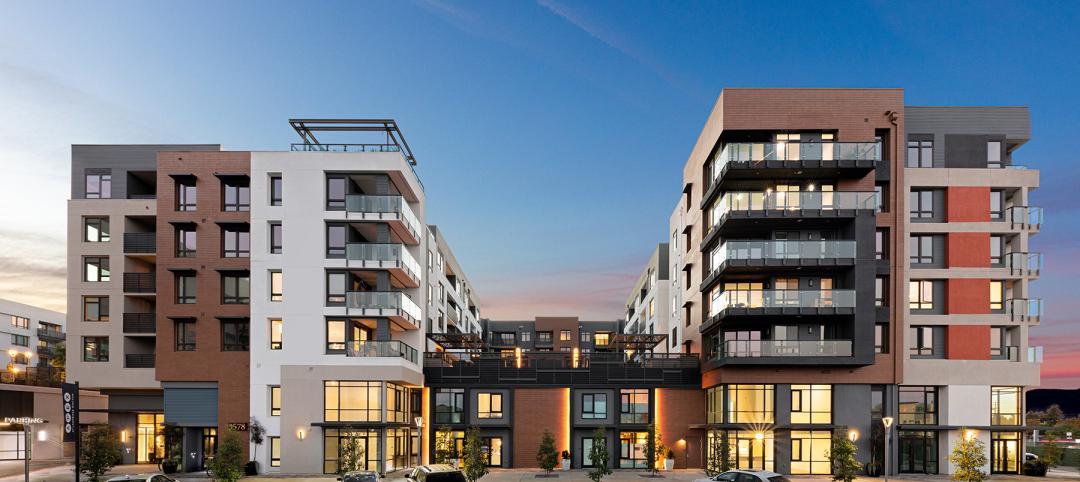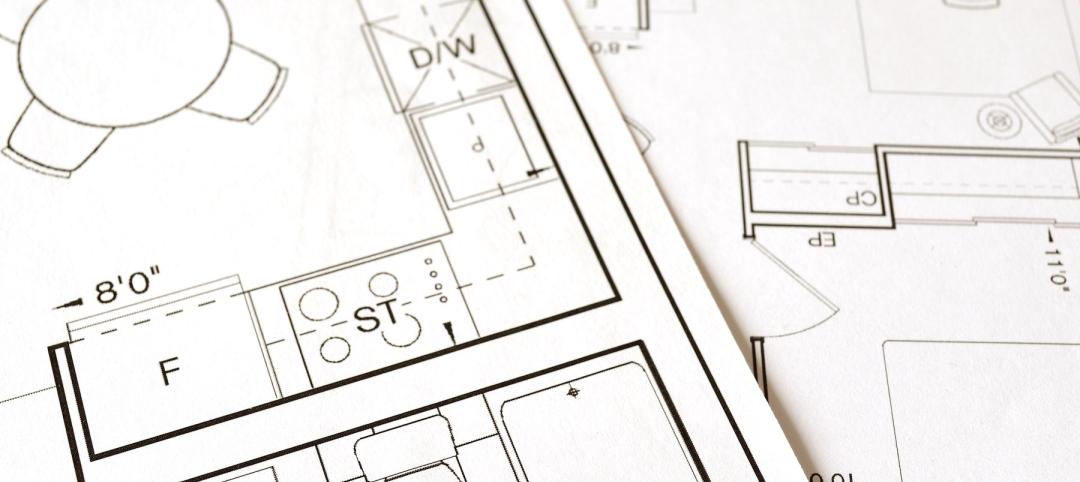Laurence Geller, the blunt-talking British chief executive of Strategic Hotels & Resorts, plans to literally spruce up the facade of the InterContinental Chicago hotel on North Michigan Avenue with a 9,800-sf living green wall.
The wall, which requires City Council approval, would be covered in thousands of plants growing year-round in concealed trays hung perpendicular to the wall. It would be the largest wall of its kind in North America and one of a handful in Chicago, according to Geller and Anne Roberts, the local landscape designer he has hired to build it.
"Unless you start glamoring this thing up, it will never look iconic," Geller said of the two-tower hotel, which Chicago-based Strategic owns. The green wall "will make this North Tower disappear."
Why, I asked, was that tower built with so few windows?
"Because it was built stupidly — cheaply and stupidly some 30-odd-years ago," Geller said. "I don't know what was in anyone's head."
Ald. Brendan Reilly, whose ward includes North Michigan Avenue, said he would introduce an ordinance authorizing the wall and other improvements to the hotel's exterior — awnings, a larger patio to the north, additional lighting — as early as July. The wall will wrap around about 10 of the North Tower's 26 stories and will be lit at night.
"I can't image this will be considered controversial," Reilly said. "Otherwise, it is a pretty unattractive blank wall."
If the council approves the project, Geller expects the frame will be finished this winter and the plants hung by spring. He estimates all of the improvements will cost $2 million to $3 million and hopes the wall will draw more customers.
"We're going to do it because it's right, and we may make a lot of money," he said. "All I need is a quarter-point (more) of market share to get a 20 percent return. And if I don't get it, I don't get it, but at least I'll have made the building better."
Chicago is known for its green roofs but has few green walls, a trend that began in the late 1980s in France. Like green roofs, living walls scrub the air and provide insulation, thereby lowering electricity costs.
But Geller said his water bill likely will increase. Roberts is going to try to water the wall with rain collected on the InterContinental's roof, but she admitted it would not meet all of the garden's needs.
The scarcity of green walls here, experts say, is due to cost and climate. The new Rivers Casino in Des Plaines has a small indoor one, and the Chicago Botanic Garden's new children's garden has four outdoor walls that cover about 670 square feet total.
The far larger project Geller envisions was once thought impossible in Chicago.
"At one time, way back at the beginning of Millennium Park, we considered a Jeff Koons-style puppy made of plants," said Donna La Pietra, the head of Millennium Park Inc., the park's fundraising arm. "The first question we had was, 'Are you sure?' The next was, 'What's going to happen in the winter?' That has always been the thorny question. What kinds of materials can one use? But for almost every challenge that gets raised in the Midwest about plant materials, someone finds a solution. Now we have much more tolerant plants."
Roberts, who has never constructed a green wall, has yet to finalize the hybrids she will use but said evergreens and native plants will be part of the mix. She is working with Rochester, N.Y.-based Green Living Technologies International, which has experience and built the walls at the botanic garden.
Before hanging the plants, Roberts will grow them indoors and slowly rotate them over several months to a 90-degree angle.
"They have to be oriented to that condition before they're put on the wall," she said.
Roberts and her team will control the wall's plastic irrigation system from an off-site computer. When the temperature dips below freezing, the system will be drained. Maintenance will be necessary two to three times per year and done in a similar manner to window-washing. Workers will dangle from the roof to trim and replace plants.
"This is horticulture to the 100th degree," Roberts said. "It's infinitely much harder to figure out what's going to grow on a wall. And this wall will face west, meaning very, very hot in the summer, and is near the lake, meaning high winds."
Geller said the first year will be "trial and error and effort" — "we'll over-irrigate and kill some (plants)," he warned. But if it succeeds, he believes tourists will flock to photograph it and that will propel more business.
"I think Michigan Avenue is old-fashioned in the way its retailing is," said Geller, who praised only the Crate & Barrel store and a Burberry store that is under construction. "Unless architecture meets retailing, retailing will never be successful."
A bolder Michigan Avenue would attract more tourists, and, he added, "I'd make more money." +
Related Stories
| Aug 29, 2022
Montana becomes first U.S. state to approve 3D printing in construction
Montana is the first U.S. state to give broad regulatory approval for 3D printing in building construction.
Giants 400 | Aug 29, 2022
Top 175 Multifamily Sector Architecture + AE Firms for 2022
Perkins Eastman, Solomon Cordwell Buenz, KTGY, and Gensler top the ranking of the nation's largest multifamily sector architecture and architecture/engineering (AE) firms for 2022, as reported in Building Design+Construction's 2022 Giants 400 Report. Note: This ranking includes all multifamily sector work, including apartments, condos, student housing, and senior living facilities.
| Aug 26, 2022
Idaho Building Code Board considers gutting large part of state energy code
Idaho Building Code Board considers gutting large part of state energy code.
Multifamily Housing | Aug 25, 2022
7 things to know about designing for Chinese multifamily developers
Seven tips for designing successful apartment and condominium projects for Chinese clients.
Giants 400 | Aug 25, 2022
Top 155 Apartment and Condominium Architecture Firms for 2022
Solomon Cordwell Buenz, KTGY, Gensler, and AO top the ranking of the nation's largest apartment and condominium architecture and architecture/engineering (AE) firms for 2022, as reported in Building Design+Construction's 2022 Giants 400 Report.
University Buildings | Aug 25, 2022
Higher education, striving for ‘normal’ again, puts student needs at the center of project planning
Sustainability and design flexibility are what higher education clients are seeking consistently, according to the dozen AEC Giants contacted for this article. “University campuses across North America are commissioning new construction projects designed to make existing buildings and energy systems more sustainable, and are building new flexible learning space that bridge the gap between remote and in-person learning,” say Patrick McCafferty, Arup’s Education Business Leader–Americas East region, and Matt Humphries, Education Business Leader in Canada region.
| Aug 25, 2022
New York City’s congestion pricing aims to reduce traffic, cut carbon
Officials recently released an environmental assessment that analyzes seven different possible pricing schemes for New York City’s congestion pricing program.
Sponsored | BD+C University Course | Aug 24, 2022
Solutions for cladding performance and supply issues
This course covers design considerations and cladding assembly choices for creating high-performance building envelopes — a crucial element in healthy, energy-efficient buildings.
| Aug 24, 2022
California’s investment in ‘community schools’ could transform K-12 education
California has allocated $4.1-billion to develop ‘community schools’ that have the potential to transform K-12 education.
| Aug 24, 2022
Architecture Billings Index slows but remains healthy
For the eighteenth consecutive month architecture firms reported increasing demand for design services in July, according to a new report today from The American Institute of Architects (AIA).

















